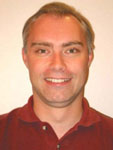
5G ultra-high capacity density systems
5G cellular systems will be required to deliver wireless communications to dense urban areas in excess of 10Gbps/km2. This requires new technically challenging solutions to deliver low cost infrastructure. This includes ultra-small cell base stations, heterogeneous systems, novel wireless backhaul/fronthaul links, cloud radio access networks, software defined networking and network function virtualisation.
Over the past few years we have undertaken many collaborative and focussed projects looking at the access and backhaul/fronthaul segments. This has included applying advanced physical layer techniques such as physical layer network coding, distributed MIMO, which have been integrated with novel higher layer techniques. Using our Labview Communications driven USRP testbed we are providing proof-of-concept demonstrations of our innovations.
We have pioneered the use of artificial intelligence in 5G ‘cognitive’ cellular systems, applying reinforcement learning and transfer learning to radio resource and topology management, delivering energy efficient solutions. We have extensively designed novel backhaul/fronthaul architectures exploiting the mm-wave bands. Our latest work is investigating cell-less architectures.
Projects
- Network Coded Modulation for Next Generation Wireless Access Networks
- FP7 Aerial Base Stations with Opportunistic Links For Unexpected and Temporary Events (ABSOLUTE)
- FP7 Beyond Next Generation Mobile Broadband
- Cognitive Radio for Multiple Heterogeneous Systems employing Smart Antennas
- Energy-efficient Topology Management for Beyond Next Generation Broadband Systems
- Design of Innovative Access Protocols for 5G Cell-less Architectures
- Resource and Topology Management for 5G Systems
- Software Defined Networking for Next Generation Communications
- Artificial Intelligence in Cognitive and Green Radio: Lessons from Control Engineering
- Radio Resource Allocation in Beyond Next Generation Wireless Systems
- Modelling, Analysis and Strategies for Vehicular Heterogeneous Wireless Networks
- Exploiting Mobile Edge Computing for Proximity Services
Partners
Previous or current non-academic collaborators include:
- BT
- Roke Manor
- Huawei
- Dstl
- National Instruments
Contact
Professor David Grace
david.grace@york.ac.uk
+44 (0)1904 32 2396David Grace is the former chair of IEEE Technical Committee on Cognitive Networks and he is a founder member of IEEE Technical Committee on Green Communications and Computing.

